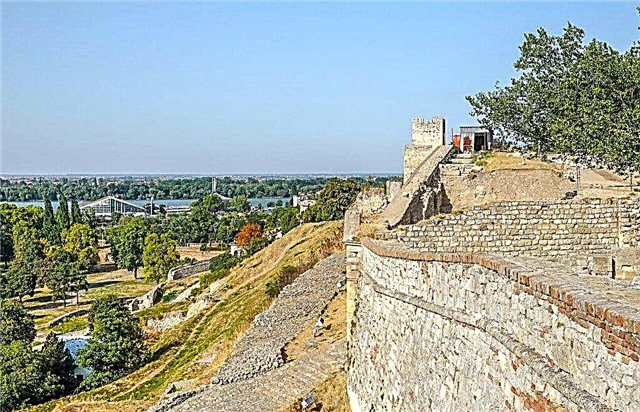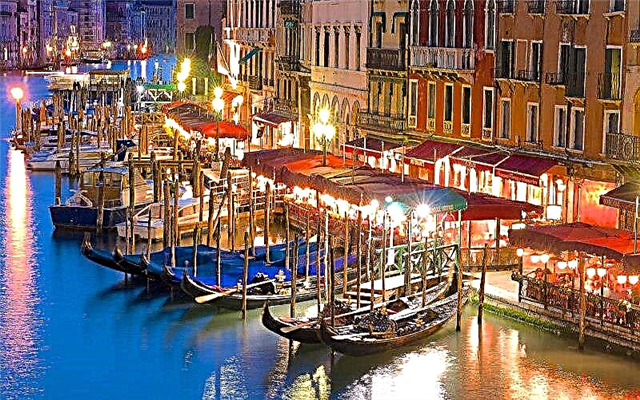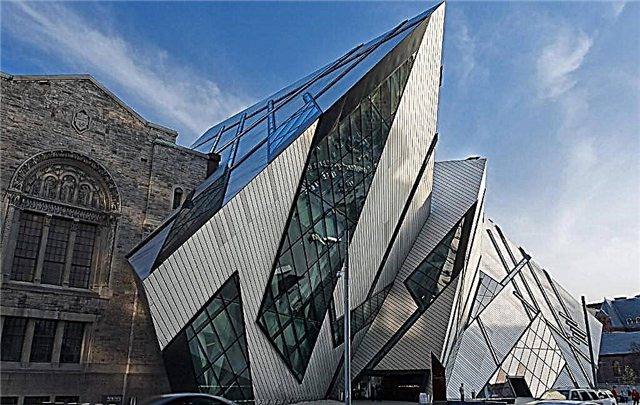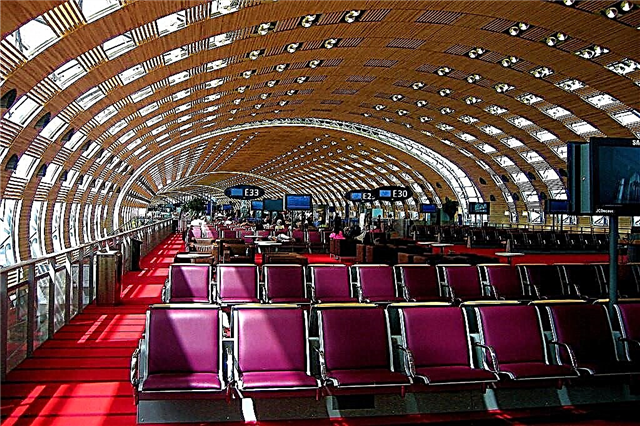Address: Russia, Nizhny Novgorod region, Nizhny Novgorod, Rozhdestvenskaya street, 1B
Start of construction: 1676
Completion of construction: 1683 year
Shrines: the icon of the Mother of God "Kazan", the icon of St. John the Baptist with a particle of relics
Coordinates: 56 ° 19'47.4 "N 43 ° 59'52.8" E
Content:
One of the oldest city churches is located on the National Unity Square, the first mention of which dates back to the 16th century. In the Time of Troubles, when Russia faced great troubles, Kuzma Minin called on the residents of Nizhny Novgorod to unite from the wooden porch of this church and to liberate Moscow from the enemy troops. Over the course of a long history, the temple has been rebuilt and changed its appearance many times. The last, large-scale restoration of the Baptist Church was completed in the mid-2000s.

View of the church from the side of Rozhdestvenskaya street
Temple history
For the first time, a wooden church is mentioned in documents dating back to the 16th century, and it is referred to as a cage church. That is, the church was built from several log cabins covered with gable roofs. Such temples were usually erected without nails.
It is believed that the Baptist Church appeared in the city in 1531. It was then that Tsar Vasily III came to Nizhny Novgorod, and here he learned about the birth of his son - the future Russian Tsar John IV. In honor of such a joyful event, the townspeople erected a wooden temple dedicated to the heavenly patron of the royal heir.
By the beginning of the 17th century, a refectory and a large porch were added to the church. It was from this porch that Kuzma Minin addressed the assembled people of Nizhny Novgorod, urging them to unite before marching on Moscow. A momentous moment for Russian history is captured in the famous painting by the painter Konstantin Makovsky. True, the author of the canvas allowed a well-known artistic fiction, since in the 17th century a wooden church could not be five-domed.
It is known from the chronicles that temples made of wood often burned in fires, and therefore they tried to change them to more durable ones - stone ones. However, such construction was never cheap and almost always took place on private donations. So it happened with the Baptist Church.

General view of the church
A wealthy Nizhny Novgorod resident Gabriel Dranishnikov became the tutor of the new church. In 1676, after several years of being in the customs service in Astrakhan, he returned to his hometown and was greatly depressed, as his house turned out to be empty. It turned out that during the absence of the merchant, his wife Anna and his only son Erofei accepted the Old Believer faith. And since the adherents of the schismatics were not honored and were persecuted, the wife and son were forced to flee the city and hide in the Old Believer sketes on the Kerzhenets River.
Dranishnikov was very sorry about what had happened and wanted to show his adherence to the "true" Orthodox faith. Therefore, he asked for permission from Archimandrite Filater to build a new stone church. When the blessing was received, the Nizhny Novgorod merchant undertook to personally purchase the stone and wood necessary for the construction, and also independently found skilled carpenters, carvers, blacksmiths, icon painters and goldsmiths.
However, three years later Dranishnikov died. A few days before his death, he left a will, according to which all his serfs became free, and his brother Lavrenty received the inheritance. There was only one condition - he had to complete the construction started. Also, according to the will, a border was built in the new church, dedicated to the holy martyr Anna. So the merchant immortalized the memory of his wife, who took the side of the schismatics.

View of the south facade of the church
The new temple was consecrated in 1683. The church building stood on a high basement, the premises in which the church's parables were leased for trade to local merchants. That is why they still add to the name of the temple - at the Lower Posad market. The nearby Kremlin tower, which previously served as the main gateway to the city, was named Ivanovskaya after the church. The nearby street and bridge had the same name.
The church stood practically unchanged until the beginning of the 19th century. After the end of the Patriotic War with the French, another church chapel was added to it from the side of the refectory and consecrated in honor of the Holy Spirit.
When in the 1830s city planning was carried out in Nizhny Novgorod, the authorities ordered to demolish the dilapidated buildings around the Kremlin. At the same time, they broke down the trade shops under one of the temple chapels. However, this led to a lot of trouble. During the reconstruction, the drainage system made in the old days was violated, and groundwater began to undermine the foundation and fill the basements. Therefore, the church had to urgently carry out repair work, for which the famous Nizhny Novgorod architects Ivan Efimovich Efimov, Georg Ivanovich Kizevetter and Anton Lavrentievich Leer were invited. Thanks to their knowledge and experience, the ancient church was saved.
Years passed, and a tent-roofed chapel in honor of the Blessed Prince Alexander Nevsky, as well as a small gatehouse (1855), appeared near the temple. Until the very end of the 19th century, the church was reconstructed from time to time - the bell tower was rebuilt, the altar was rebuilt and the walls were repaired.

View of the church from the Kremlin Boulevard
During the active struggle of the Soviet government with religion, the old church was closed (1937), and its last priest was arrested and shot. Subsequently, the temple repeatedly changed tenants, but for the longest time it housed a sports school, where motorcyclists were trained.
In the 1990s, like many other city churches, the Baptist Church was returned to the Orthodox community. In 1995, the sports and technical school vacated the premises, and a year later, after a 59-year hiatus, the first services were held in the church. The restoration of the ancient temple was carried out at the expense of benefactors and the Balakhna Pulp and Paper Mill. Large-scale renovation work lasted for more than 10 years, but church services at that time were held regularly. The complete reconstruction was completed in 2005.
Features of the architecture of the church
The majestic temple sits on a hillside and is visible from afar. It was built by a "ship", that is, the temple itself, the refectory and the bell tower are compositionally stretched in one line, which was traditional for the cult architecture of the 17th century. However, over a long history, the appearance of this church has changed significantly and was corrected by numerous reconstructions.

View of the north facade of the church
The main volume of the temple has two tiers. Initially, it had a podzakomarny cover. But now the temple is covered with a hipped roof. It is crowned with five gilded chapters set on gracefully decorated drums. A large one-story refectory church is connected to a high three-tiered hipped-roof bell tower.
The current state of the temple and the visiting regime
The Orthodox church is active. Services in it are held every day at 8.00 and 17.00. An Orthodox lecture hall has been set up at the church, and a Sunday school is open for the children of the parishioners. The patronal feast is celebrated here on July 7.
Particularly revered shrines of the temple are four icon cases installed in the refectory with images and particles of the relics of Orthodox saints. In addition, believers come to this church to pray at the icons with the relics of Nicholas the Wonderworker, the Great Martyr Catherine, Seraphim of Sarov and Sergius of Radonezh. Since 2009, there has been an icon in the church with parts of the relics of John the Baptist.
A monument to Minin and Pozharsky is erected in front of the church building. This is a small copy of the monument that stands on Red Square in Moscow.

Domes of the church
How to get there
The temple is located near the walls of the Nizhny Novgorod Kremlin and People's Unity Square, on Rozhdestvenskaya Street, 1B. You can reach it by trams (stop "Skoba"), buses and minibuses (stop "Rozhdestvenskaya street - Nizhnevolzhskaya embankment").











